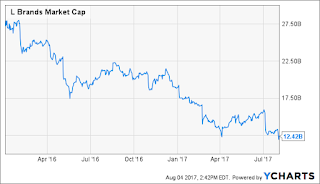Being jobless for these months has taught me a lot.
(Which proves that, everyday of our lives and no matter at
what age or stage, we can learn more than we could possibly imagine.)
When I first came back to the US after 10 years in China, and
started this blog, it was to establish my “brand.” But as I began to learn more
and more about the world of apparel and retail today (possible employers), I
found that there was a clear message coming to me: The companies I had held in my mind as icons had, for the most part,
lost their way, their identity and their customer.
Then, upon talking to many of them about possible
employment, I found that they had no clue about the fix they were in. They were
narrow-minded and sometimes (usually) arrogant. Rather than look for someone
with the experience, talent and character to raise them up, it was business as
usual. Here’s a particularly ridiculous example: After more than 30 successful
years in global sourcing and retailing, Macy’s told me that a position whose
title was “Sourcing Strategy” was not for me.
So here I am and here we are. My last article was about the
“Category Killers,” a term I coined to refer to the companies that were
reshaping retail by their laser focus on customer and product (in that order).
Now we see the killed or to-be-killed.
Various companies, various products, but they all have one thing in common: they
are living in a bubble of denial.
It is an easy disease to catch when you are working in a
self-reinforcing environment which makes you feel how great you are just by
showing up to work, not by what you accomplished to make the world or your
company better and more secure every day.
Let’s nominate some companies to start this “walk of shame.”
1. L Brands/Victoria’s Secret
Victoria’s Secret. Billions spent on a world-renowned
fashion show with world-renowned models. So cool. Despite that, the customer is
leaving. Look at this, money talks:
This one through August 17. If I could find a newer one, the
bottom of the chart would probably need to be expanded. (Note L Brands includes
other companies such as Bath and Body Works, whose troubles are attributed to
the stores being mall-based—yo, the decline of shopping malls is not new news,
what are you doing about it? Tell Wall Street, since you sure won’t tell
me-looks like same bubble of denial).
Wait, I love this excuse- Victoria’s Secret sales declines
are attributed to their exit from the swim and apparel categories.
(marketwatch: https://www.marketwatch.com/story/l-brands-problems-extend-beyond-victorias-secret-bras-to-bath-body-works-2017-08-31).
So you are going to focus your future on what you do best-bras?
That business also is evolving away from Victoria’s Secret,
by their own hand. In my article, “Bra or Bralette?” I documented my prediction
and reasoning why I thought the bralette would eventually replace the
structured bra. This should be a good business for Victoria’s Secret, right? No. They also walked away from this
business.
To quote myself in the aforementioned article, “But more
than that, I am predicting the marginalization, if not extinction, of those who
miss the signals of disruptive change, or see them and stand pat. I know a
dinosaur when I see one.”
I know a bubble of denial when I see one.
Here are some pictures from one of Victoria’s Secret’s
stores’ Christmas windows (what do you see that they have in common? I see the
word FREE):
2. J. Crew-
After announcing that they would be closing 50 stores
instead of 20:
Talk about denial- First, we hear that J. Crew’s problems
are due to the fact that clothes are going out of style. From the chairman and
Legend Mickey Drexler:
Clothes
are just not that important or as important as they were,” he said during
during a conversation at The New York Times
DealBook Conference. That, and we all seem to be glued to our phones. “[People
are] not really hanging around in shopping centers," he added. "[Cell
phones] are local villages, and you don’t have to go to the villages to see
people.”
Then the new President Mike Nicholson claims that stores are going out of style:
“In
order to drive top-line growth, we must evolve our business model from a
traditional brick-and-mortar specialty retailer to a digital-first omnichannel
business,” (last 2 quotes: http://www.refinery29.com/2017/11/182285/jcrew-store-closings-2017)
Tell that to Inditex. And H&M. And Lidl. It
is refreshing that, at least, neither is blaming it on Amazon.
OK, you tell me: Bubble or no bubble?
So, back to my joblessness. If you go to
Glassdoor, J. Crew has more than 100 jobs posted in the NY area. Even if I
could get one of those jobs (and I probably couldn’t because I am not a narrow
fit for the positions or some other unknown reason), I couldn’t do it. After
all this, I can’t live in a bubble of denial.
Which is why, unless one of the Category
Killers or a spanking new and exciting startup is willing to hire me, I will be
seeking employment outside of the apparel industry, where I have succeeded for
more than 30 years. What a waste….
I want to go home every day believing I did
some good work for my customer, my company and the world of business. If I can’t,
then something is wrong with where I am working, because in a company bound for
success every employee, top to bottom,
should feel that way every day.
Fortuna Iuvat Fortes.





















